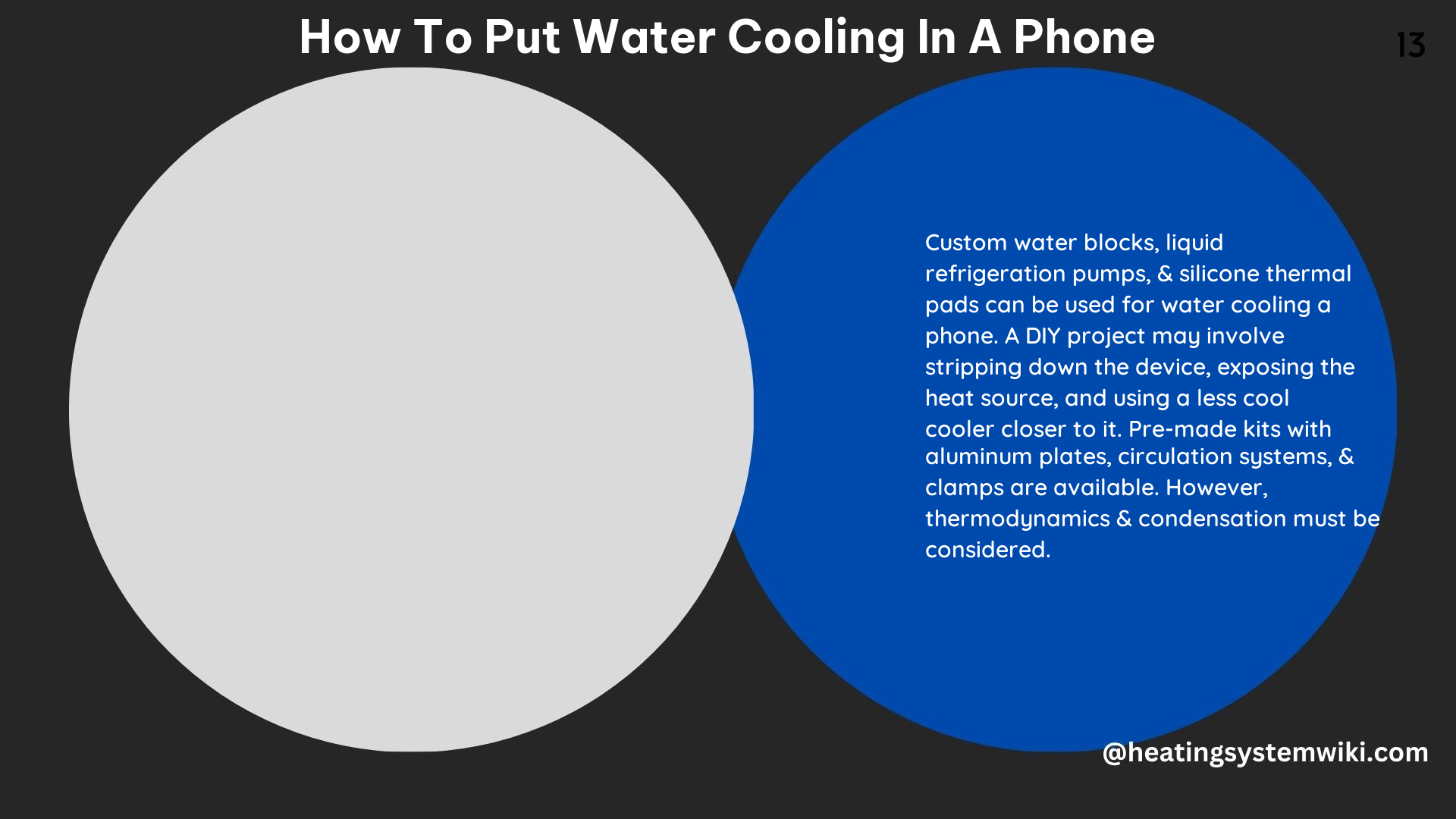Putting water cooling in a phone is a complex process that requires careful selection of components and meticulous assembly. This comprehensive guide will walk you through the step-by-step process, providing technical specifications and a detailed DIY manual to help you create a custom water-cooling loop for your phone.
Choosing the Right Components
The key to a successful water-cooling system for a phone is selecting the appropriate components that are specifically designed for the device’s size and heat output. Let’s dive into the essential elements you’ll need:
Water Block
The water block is the heart of the cooling system, as it directly contacts the phone’s processor to dissipate heat. When choosing a water block, consider the following factors:
- Compatibility: Ensure the water block is designed to fit your specific phone model, such as the Koolance CPU-370 for the Samsung Note 20 Ultra.
- Thermal Performance: Look for a water block with a copper base that can make efficient thermal contact with the processor, maximizing heat transfer.
- Fittings: The water block should have G 1/4 threaded fittings to allow for easy connection of the coolant lines.
Pump
A powerful yet compact pump is crucial for circulating the coolant through the water-cooling loop. The EKWB D5 pump is an excellent choice, offering a maximum flow rate of 1500 L/h while being small enough to fit inside a phone case.
Radiator
The radiator is responsible for dissipating the heat from the coolant. For a phone-based water-cooling system, you’ll want a small radiator with a large surface area, such as the Black Ice GT 120 from Heatkiller. This radiator measures 120mm x 120mm and has a fin density of 22 FPI, ensuring efficient heat dissipation.
Coolant
The choice of coolant is essential to ensure compatibility with the materials in your water-cooling loop. The Mayhems Pastel Coolant is a great option, as it is non-toxic and has a wide operating temperature range of -40°C to +150°C, making it suitable for the demands of a phone-based system.
Assembling the Water-Cooling Loop

Now that you have the necessary components, it’s time to put the water-cooling system together. Follow these steps carefully:
- Disassemble the Phone: Begin by removing the back panel of the phone to access the processor.
- Apply Thermal Paste: Apply a thin, even layer of thermal paste to the processor’s surface to improve heat transfer.
- Attach the Water Block: Carefully place the water block over the processor and secure it in place using the appropriate screws.
- Connect the Pump: Attach the pump to the water block using the G 1/4 threaded fittings, ensuring a tight and secure connection.
- Connect the Radiator: Connect the radiator to the pump using flexible coolant lines, creating a closed loop.
- Fill the Loop: Carefully fill the water-cooling loop with the chosen coolant, taking care to avoid any leaks.
- Mount the Radiator: Position the radiator in a location where it can receive good airflow, such as the back of the phone or an external mounting solution.
- Test the System: Power on the phone and monitor the temperatures to ensure the water-cooling system is functioning correctly and effectively dissipating heat.
Optimizing Performance
To maximize the performance of your phone’s water-cooling system, consider the following tips:
- Airflow Optimization: Ensure the radiator is positioned in a way that allows for optimal airflow, either through the use of additional fans or strategic placement.
- Coolant Maintenance: Regularly check the coolant level and condition, and replace it if necessary to maintain the system’s efficiency.
- Overclocking Potential: With the improved cooling capabilities, you may be able to overclock your phone’s processor to unlock additional performance, but be mindful of the thermal limits.
- Monitoring and Troubleshooting: Continuously monitor the system’s temperatures and performance, and be prepared to troubleshoot any issues that may arise.
By following this comprehensive guide and paying attention to the technical details, you can successfully put a water-cooling system in your phone, unlocking improved performance and thermal management for your mobile device.
